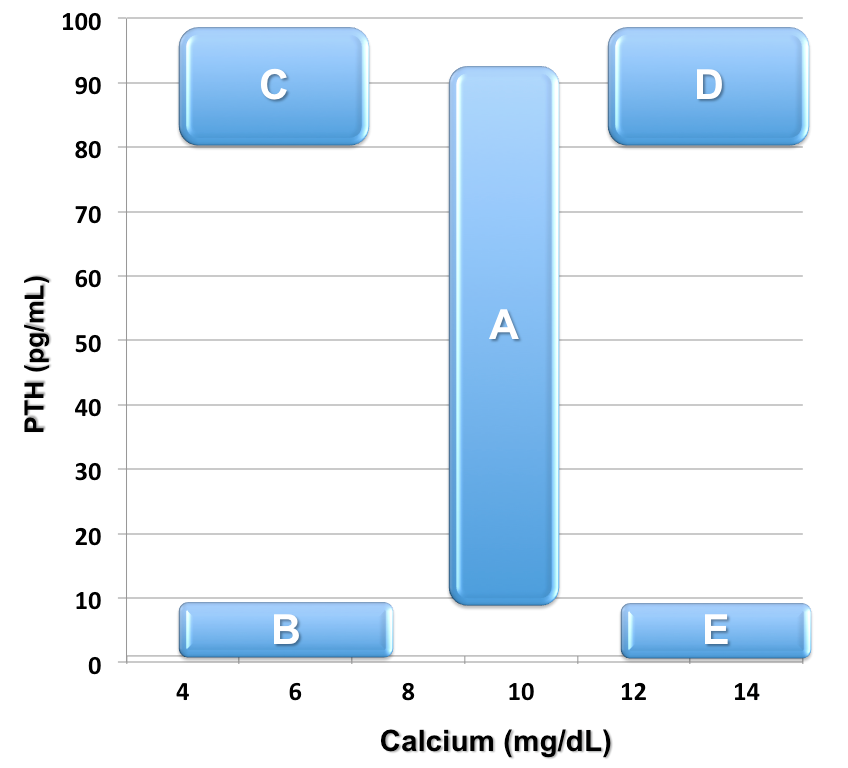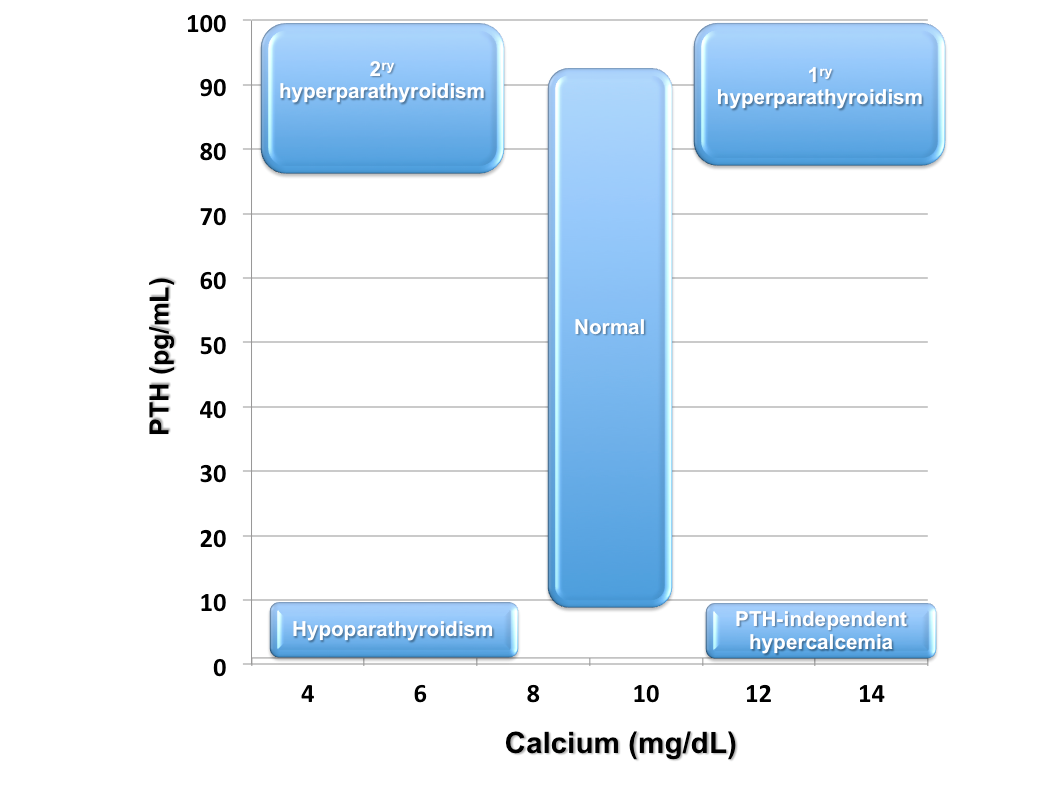WBR0270: Difference between revisions
No edit summary |
m (refreshing WBR questions) |
||
| (26 intermediate revisions by 3 users not shown) | |||
| Line 1: | Line 1: | ||
{{WBRQuestion | {{WBRQuestion | ||
|QuestionAuthor=Gonzalo Romero | |QuestionAuthor=[[User:Gonzalo Romero|Gonzalo A. Romero, M.D.]] [mailto:gromero@wikidoc.org] (Reviewed by {{YD}}) | ||
|ExamType=USMLE Step 1 | |ExamType=USMLE Step 1 | ||
|MainCategory=Pathology, Pathophysiology, Physiology | |MainCategory=Pathology, Pathophysiology, Physiology | ||
| Line 8: | Line 8: | ||
|MainCategory=Pathology, Pathophysiology, Physiology | |MainCategory=Pathology, Pathophysiology, Physiology | ||
|SubCategory=Endocrine | |SubCategory=Endocrine | ||
|MainCategory=Pathology, Pathophysiology, Physiology | |||
|MainCategory=Pathology, Pathophysiology, Physiology | |MainCategory=Pathology, Pathophysiology, Physiology | ||
|MainCategory=Pathology, Pathophysiology, Physiology | |MainCategory=Pathology, Pathophysiology, Physiology | ||
| Line 20: | Line 21: | ||
|MainCategory=Pathology, Pathophysiology, Physiology | |MainCategory=Pathology, Pathophysiology, Physiology | ||
|SubCategory=Endocrine | |SubCategory=Endocrine | ||
|Prompt=A 46 year-old woman presents to the outpatient | |Prompt=A 46-year-old woman presents to the outpatient clinic for a long history of constipation. She states that her symptoms did not improve despite the use of over-the-counter fiber tablets. Her past medical history is significant for recurrent kidney stones. The patient denies any family history of similar symptoms. Upon review of systems, the patient also reports increased thirst, frequent urination, and easy fatigability. Her temperature is 37.1 °C (98.6 °F), blood pressure is 142/88 mmHg, and heart rate is 70/min. Physical examination in the clinic is unremarkable. Work-up reveals decreased bone mineral density in the distal third of the forearm. Urine work-up is remarkable for hypercalciuria and elevated cAMP. Which of the following set of serum lab results is most likely present in this patient? | ||
[[File:PTHCa.png | <br> | ||
|Explanation= | [[File:PTHCa.png|500px]] | ||
PTH has many functions: | |Explanation=Primary hyperparathyroidism is the most common cause of hypercalcemia. The most common cause of primary hyperparathyroidism is a single adenoma, which accounts for more than 80% of cases. Less commonly, primary hyperparathyroidism is caused by hyperplasia of the parathyroid glands or hereditary syndromes, such as multiple endocrine neoplasia (MEN) syndromes types 1 and 2A. Although the diagnosis of primary hyperparathyroidism is usually incidental since the majority of patients remain asymptomatic, manifestations of the disorder are primarily due to hypercalcemia. The classical clinical features of hypercalcemia may be summarized as: Stones, bones, groans, and psychiatric overtones. | ||
|Approved= | *Stones: Nephrolithiasis and nephrocalcinosis | ||
*Bones: Low bone mineral density (characteristically at the distal third of the radius as observed in this patient), vertebral fractures, and bone pain | |||
*Groans: Constipation | |||
*Psychiatric overtones: Cognitive impairment, anxiety, | |||
Other features may include polyuria and polydypsia, easy fatigability, high blood pressure, insulin resistance, hyperglycemia, and dyslipidemia. | |||
Typically, initial laboratory findings of patients with primary hyperparathyroidism reveal hypercalcemia on routine work-up. Total serum calcium level should always be differentiated from free and albumin-bound circulating calcium. Accordingly, calcium levels should be corrected and calculated as follows: Corrected serum calcium (mg/dL) = Measured total calcium (mg/dL) + [0.8 x (4.0 - serum albumin (g/dL)]. Patients with hypercalcemia should undergo testing for serum PTH, which is often elevated or inappropriately normal in patients with primary hyperparathyroidism. The definitive diagnosis of primary hyperparathyroidism cannot be made until other diseases that also cause hypercalcemia and/or elevated serum PTH are excluded, such as thiazide or lithium intake, tertiary hyperparathyroidism due to end-stage renal disease (ESRD), familial hypocalciuric hypercalcemia, and PTHrp-secreting malignancies. Of note, PTH and PTHrp are measured separately during laboratory work-up, and patients with PTHrp-secreting tumors usually have low PTH and elevated PTHrp levels). Patients with primary hyperparathyroidism usually have decreased 25-hydroxyvitamin D levels due to the increased conversion to 1,25-dihydroxyvitamin D. Urinary creatinine and calcium levels should be measured to differentiate primary hyperparathyroidism from familial hypocalciuric hypercalcemia (mutation in calcium-sensing receptor gene). In patients with primary hyperparathyroidism, the urinary calcium:creatinine clearance ratio is typically > 0.01. Other urinary findings also include elevated cAMP levels. Parathyroidectomy is often required to treat patients with symptomatic disease. | |||
Physiologically, PTH has many functions: | |||
# Increases the production of macrophage colony-stimulating factor and RANK-L, which binds RANK on osteoblasts and consequently stimulate osteoclasts | |||
# Net increase in serum calcium levels and net decrease in serum phosphate levels | |||
# Increases bone resorption of both calcium and phosphate | |||
# Increases the activity of Ca<sup>2+</sup>/Na<sup>+</sup> exchange and increases the reabsorption of calcium in the early distal convoluted tubule in the kidneys | |||
# Inhibits the activity of Na<sup>+</sup>/PO4<sup>3-</sup> cotransport in the proximal convoluted tubule in the kidneys and facilitates that renal excretion of phosphate | |||
# Stimulates 1-α hydroxylase, which converts 25-hydroxyvitamin D into its active form, 1,25-dihydroxyvitamin D | |||
<br> | |||
[[File:PTH & Ca pathology.png|700px]] | |||
|AnswerA=A | |||
|AnswerAExp=This represents the normal range of calcium and PTH values in serum; calcium levels vary from 8.5 to 10.2 mg/dL and PTH levels vary from 15-65 pg/mL. PTH increases when the ionized calcium level decreases. | |||
|AnswerB=B | |||
|AnswerBExp=[[Hypoparathyroidism]] is commonly caused by incidental parathyroidectomy duruing thyroid surgery. Other causes of hypoparathyroidism include autoimmune destruction of the glands. The lab values reveal low PTH and low calcium levels. | |||
|AnswerC=C | |||
|AnswerCExp=[[Secondary hyperparathyroidism]] is characterized by elevated serum [[PTH]] due to decreased levels of calcium. The most common causes are chronic renal insufficiency (due to impaired [[vitamin D]] hydroxylation towards its active form) and intestinal malabsorption of calcium. | |||
|AnswerD=D | |||
|AnswerDExp=[[Primary hyperparathyroidism]] is most commonly caused by an adenoma, hyperplasia, or carcinoma of the parathyroid glands. | |||
|AnswerE=E | |||
|AnswerEExp=This option corresponds to [[hypercalcemia]] independent of PTH, as observed in malignancies with paraneoplastic syndromes in PTHrp-secreting tumors. | |||
|EducationalObjectives=[[Primary hyperparathyroidism]] is most commonly caused by an adenoma, hyperplasia, or carcinoma of the parathyroid glands. Although the diagnosis of primary hyperparathyroidism is usually incidental since the majority of patients remain asymptomatic, manifestations of the disorder are primarily due to hypercalcemia. The classical clinical features of hypercalcemia may be summarized as: Stones, bones, groans, and psychiatric overtones. Typically, patients with primary hyperparathyroidism have elevated serum calcium levels and elevated or inappropriately normal serum PTH levels. | |||
|References=Marcocci C, Cetani F. Primary hyperparathyroidism. N Engl J Med. 2011;365(25):2389-97.<br> | |||
First Aid 2014 page 323, 324 | |||
|RightAnswer=D | |||
|WBRKeyword=PTH, Primary hyperparathyroidism, Hyperparathyroidism, Hypercalcemia, Constipation, Polyuria, Polydypsia, Calcium, Phosphate, Vitamin D, Kidney stones, Nephroplithiasis, Hypercalciuria, | |||
|Approved=Yes | |||
}} | }} | ||
Latest revision as of 00:01, 28 October 2020
| Author | [[PageAuthor::Gonzalo A. Romero, M.D. [1] (Reviewed by Yazan Daaboul, M.D.)]] |
|---|---|
| Exam Type | ExamType::USMLE Step 1 |
| Main Category | MainCategory::Pathology, MainCategory::Pathophysiology, MainCategory::Physiology |
| Sub Category | SubCategory::Endocrine |
| Prompt | [[Prompt::A 46-year-old woman presents to the outpatient clinic for a long history of constipation. She states that her symptoms did not improve despite the use of over-the-counter fiber tablets. Her past medical history is significant for recurrent kidney stones. The patient denies any family history of similar symptoms. Upon review of systems, the patient also reports increased thirst, frequent urination, and easy fatigability. Her temperature is 37.1 °C (98.6 °F), blood pressure is 142/88 mmHg, and heart rate is 70/min. Physical examination in the clinic is unremarkable. Work-up reveals decreased bone mineral density in the distal third of the forearm. Urine work-up is remarkable for hypercalciuria and elevated cAMP. Which of the following set of serum lab results is most likely present in this patient? |
| Answer A | AnswerA::A |
| Answer A Explanation | AnswerAExp::This represents the normal range of calcium and PTH values in serum; calcium levels vary from 8.5 to 10.2 mg/dL and PTH levels vary from 15-65 pg/mL. PTH increases when the ionized calcium level decreases. |
| Answer B | AnswerB::B |
| Answer B Explanation | [[AnswerBExp::Hypoparathyroidism is commonly caused by incidental parathyroidectomy duruing thyroid surgery. Other causes of hypoparathyroidism include autoimmune destruction of the glands. The lab values reveal low PTH and low calcium levels.]] |
| Answer C | AnswerC::C |
| Answer C Explanation | [[AnswerCExp::Secondary hyperparathyroidism is characterized by elevated serum PTH due to decreased levels of calcium. The most common causes are chronic renal insufficiency (due to impaired vitamin D hydroxylation towards its active form) and intestinal malabsorption of calcium.]] |
| Answer D | AnswerD::D |
| Answer D Explanation | [[AnswerDExp::Primary hyperparathyroidism is most commonly caused by an adenoma, hyperplasia, or carcinoma of the parathyroid glands.]] |
| Answer E | AnswerE::E |
| Answer E Explanation | [[AnswerEExp::This option corresponds to hypercalcemia independent of PTH, as observed in malignancies with paraneoplastic syndromes in PTHrp-secreting tumors.]] |
| Right Answer | RightAnswer::D |
| Explanation | [[Explanation::Primary hyperparathyroidism is the most common cause of hypercalcemia. The most common cause of primary hyperparathyroidism is a single adenoma, which accounts for more than 80% of cases. Less commonly, primary hyperparathyroidism is caused by hyperplasia of the parathyroid glands or hereditary syndromes, such as multiple endocrine neoplasia (MEN) syndromes types 1 and 2A. Although the diagnosis of primary hyperparathyroidism is usually incidental since the majority of patients remain asymptomatic, manifestations of the disorder are primarily due to hypercalcemia. The classical clinical features of hypercalcemia may be summarized as: Stones, bones, groans, and psychiatric overtones.
Other features may include polyuria and polydypsia, easy fatigability, high blood pressure, insulin resistance, hyperglycemia, and dyslipidemia. Typically, initial laboratory findings of patients with primary hyperparathyroidism reveal hypercalcemia on routine work-up. Total serum calcium level should always be differentiated from free and albumin-bound circulating calcium. Accordingly, calcium levels should be corrected and calculated as follows: Corrected serum calcium (mg/dL) = Measured total calcium (mg/dL) + [0.8 x (4.0 - serum albumin (g/dL)]. Patients with hypercalcemia should undergo testing for serum PTH, which is often elevated or inappropriately normal in patients with primary hyperparathyroidism. The definitive diagnosis of primary hyperparathyroidism cannot be made until other diseases that also cause hypercalcemia and/or elevated serum PTH are excluded, such as thiazide or lithium intake, tertiary hyperparathyroidism due to end-stage renal disease (ESRD), familial hypocalciuric hypercalcemia, and PTHrp-secreting malignancies. Of note, PTH and PTHrp are measured separately during laboratory work-up, and patients with PTHrp-secreting tumors usually have low PTH and elevated PTHrp levels). Patients with primary hyperparathyroidism usually have decreased 25-hydroxyvitamin D levels due to the increased conversion to 1,25-dihydroxyvitamin D. Urinary creatinine and calcium levels should be measured to differentiate primary hyperparathyroidism from familial hypocalciuric hypercalcemia (mutation in calcium-sensing receptor gene). In patients with primary hyperparathyroidism, the urinary calcium:creatinine clearance ratio is typically > 0.01. Other urinary findings also include elevated cAMP levels. Parathyroidectomy is often required to treat patients with symptomatic disease. Physiologically, PTH has many functions:
|
| Approved | Approved::Yes |
| Keyword | WBRKeyword::PTH, WBRKeyword::Primary hyperparathyroidism, WBRKeyword::Hyperparathyroidism, WBRKeyword::Hypercalcemia, WBRKeyword::Constipation, WBRKeyword::Polyuria, WBRKeyword::Polydypsia, WBRKeyword::Calcium, WBRKeyword::Phosphate, WBRKeyword::Vitamin D, WBRKeyword::Kidney stones, WBRKeyword::Nephroplithiasis, WBRKeyword::Hypercalciuria |
| Linked Question | Linked:: |
| Order in Linked Questions | LinkedOrder:: |

